LED Current Limiting Resistor Calculation
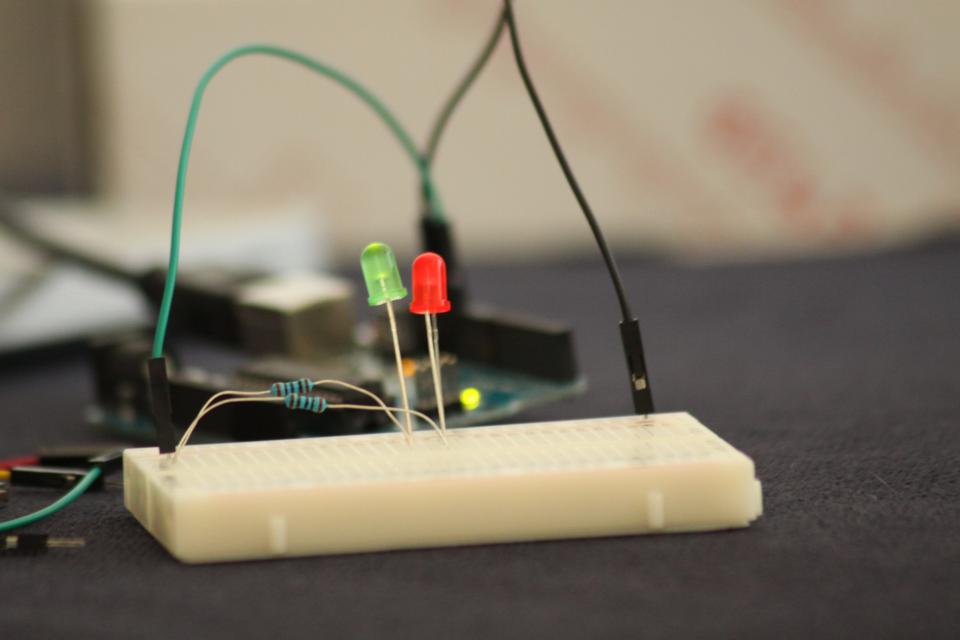
This article details how to calculate the LED current limiting resistor.
LEDs, like light bulbs, will break if voltage is applied directly to them.
Therefore, it is necessary to connect a resistor in series to suppress the current flowing to the LED.
Difference between LEDs and Light Bulbs
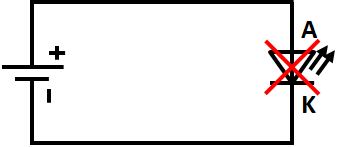
Unlike light bulbs, LEDs can be damaged if a large amount of current flows through them when voltage is applied directly to them.
This is because the bulb itself has resistance, whereas the LED has almost no resistance (0Ω).
Therefore, it is necessary to connect a resistor in series with the LEDs (current limiting resistor) that moderately suppresses the current flowing to the LEDs.
How to determine the LED Current Limiting Resistor
DC Forward Current and DC Forward Voltage of LED
As an example, let's determine the current limiting resistor for the 5mm red LED "OSR5JA5E34B".

First, if you check the data sheet of "OSR5JA5E34B" for the "DC Forward Current", you will find that it is 30mA.
However, 30mA exactly may destroy the LEDs, so we will consider applying 10mA (1/3 of 30mA) to the LEDs.
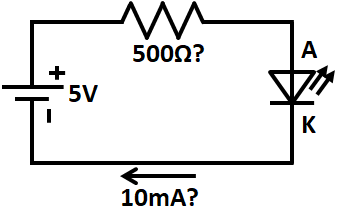
If the supply voltage is 5V, do you think the value of the current limiting resistor is 500Ω(E/I=5V/10mA) from Ohm's law?
In fact, the LEDs will experience a voltage drop by the value of the DC forward voltage as the energy to convert it into light.
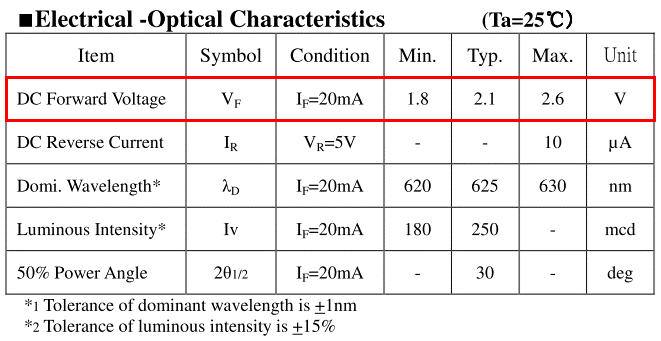
First, if you check the data sheet of "OSR5JA5E34B" for the "DC Forward Current", you will find that it is 30mA.
Next, if you check the data sheet of "OSR5JA5E34B" for the "DC Forward Voltage", you will find that it is 2.1V in typical value.
OSR5JA5E34B" uses a voltage of 2.1V to emit light. Therefore, we see that only about 2.9V is applied to the current limiting resistor.
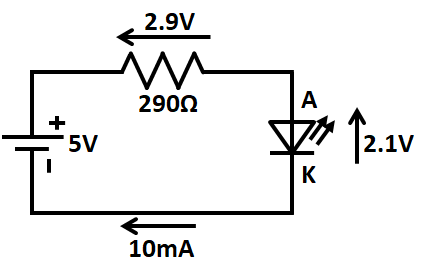
Calculating the value of the current limiting resistor again, we found that 290Ω(E/I = 2.9V/10mA) from Ohm's law.
Incidentally, when the DC forward current is 20mA, the datasheet clearly states that the typical value (Typ.) of the DC forward voltage is 2.1V, but even if the DC forward current is 10mA, the DC forward voltage does not change that much, so it can be ignored.
E-series of Resistors and Power Consumption
In "DC Forward Current and DC Forward Voltage of LED," we found that to apply 10mA of current to "OSR5JA5E34B," we need to connect a 290Ω current-limiting resistor in series.
However, if you try to find a 290Ω resistor in an electronic parts shop, you will not find it. In fact, the value of a resistor is determined based on a sequence of numbers called the E-series.
The E-series of resistors ranges from E3 to E192, but the larger the value of the series, the finer the value, so it is best to choose from E3, E6, E12, and E24.
A value close to 290Ω at E24 would be 300Ω, so calculating the current flowing through the LED from Ohm's law, we find that E/R=2.9V/300Ω=approx. 9.67mA.

Now that we have finally determined the value of the current-limiting resistor, we must also consider the power dissipation of the resistor.
The calculation is "P=E×I=(R×I)×I=300Ω×9.67mA×9.67mA=approx. 0.0281W".
This means that the resistor must be selected with a resistor of sufficient power rating, since the resistor will generate heat for the power consumption of 0.0281W. As a rule of thumb, the power consumption should be less than half of the rated power.
Although 1/4W (0.25W) and 1/8W (0.125W) resistors are readily available at electronic parts shops, the power consumption of 0.0281W calculated in this case is sufficient for either power rated resistor.
Finally, to summarize, the current limiting resistor is "300Ω 1/8W" when a current of approximately 10mA is applied to "OSR5JA5E34B".